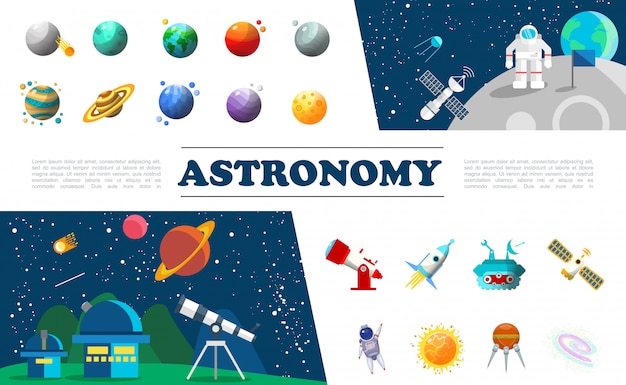Fascinating Facts about Comets

Comets are often referred to as dirty snowballs due to their composition.
The famous Halley’s Comet returns to Earth’s vicinity approximately every 76 years.
Comets are made up of rock, dust, water ice, and frozen gases.
More than 3,000 comets have been discovered to date.
The tail of a comet always points away from the Sun due to the solar wind.
Comets can have tails that span hundreds of thousands of kilometers.
Some comets have been observed to have multiple tails.
Comets can reach speeds of up to 150,000 kilometers per hour.
Comets can have highly elliptical orbits, bringing them close to the Sun and then far into the outer solar system.
The nucleus of a comet, its solid core, can range in size from a few meters to tens of kilometers in diameter.
The first recorded observation of Halley’s Comet dates back to 240 BCE.
The largest comet on record is Comet Hale-Bopp, with a nucleus estimated to be about 40 kilometers in diameter.
Comets can be visible to the naked eye, especially when they pass close to Earth.
Comets can create meteor showers when Earth passes through their debris trails.
The dust and gas released from a comet’s nucleus create a coma, which is a fuzzy-like atmosphere around the nucleus.
Comets have been observed in many ancient civilizations and are often associated with supernatural or religious beliefs.
Comets can play a role in delivering water and organic molecules to planets, potentially contributing to the development of life.
Fascinating Facts about Comets part 2
Comets can have highly eccentric and unpredictable orbits.
Comets have been studied by spacecraft such as the Rosetta mission, which successfully landed a probe on a comet’s nucleus.
The Oort Cloud is a hypothesized region in the outer solar system where comets originate from.
Comets can have different colors, ranging from reddish to bluish.
The first spacecraft to visit a comet was the European Space Agency’s Giotto mission, which flew by Halley’s Comet in 1986.
Comets can disintegrate when they get too close to the Sun, due to the intense heat and tidal forces.
The tail of a comet contains ionized gas that reflects sunlight, creating a bright and visible trail.
Comets can have highly eccentric orbits that take them from the outer reaches of the solar system to the inner regions near the Sun.
Comets are believed to be remnants from the early formation of the solar system.
Comets can be observed from Earth using telescopes and even with the naked eye on certain occasions.
The nucleus of a comet can be mostly composed of volatile materials, such as water ice and carbon dioxide ice.
Comets can cause temporary impacts on the Sun’s activity as they interact with the solar wind.
Comets can range in size from a few kilometers to tens of kilometers in diameter.
The composition of a comet’s nucleus can provide insights into the conditions of the early solar system.
Some comets have been observed to have a double nucleus, indicating a previous collision or merging of two smaller comets.
Comets can have long orbital periods, with some taking thousands of years to complete a single orbit around the Sun.
Comets can appear as a bright star-like object with a tail, making them distinct from regular stars.
The word comet comes from the Latin word cometa, meaning long-haired star.
Comets can experience outbursts, releasing bursts of gas and dust, causing changes in their appearance and brightness.
Comets can have different shapes, ranging from spherical to irregular.
The tails of comets always point away from the Sun because of the solar wind’s influence.
Some comets are known to have been captured by the gravity of planets, becoming their moons.
Comets can leave behind a trail of debris as they pass through the inner solar system, potentially causing future meteor showers.
Comets are believed to have played a role in the delivery of water to Earth’s oceans.
Comets can have diameters ranging from less than a kilometer to tens of kilometers.
The Great Comet of 1811 was visible for approximately 260 days, making it one of the most notable comets in history.
Comets have been studied using space probes, telescopes, and even by sample return missions, such as the Stardust mission.
Comets have fascinated humans for centuries, inspiring myths, stories, and scientific exploration.

